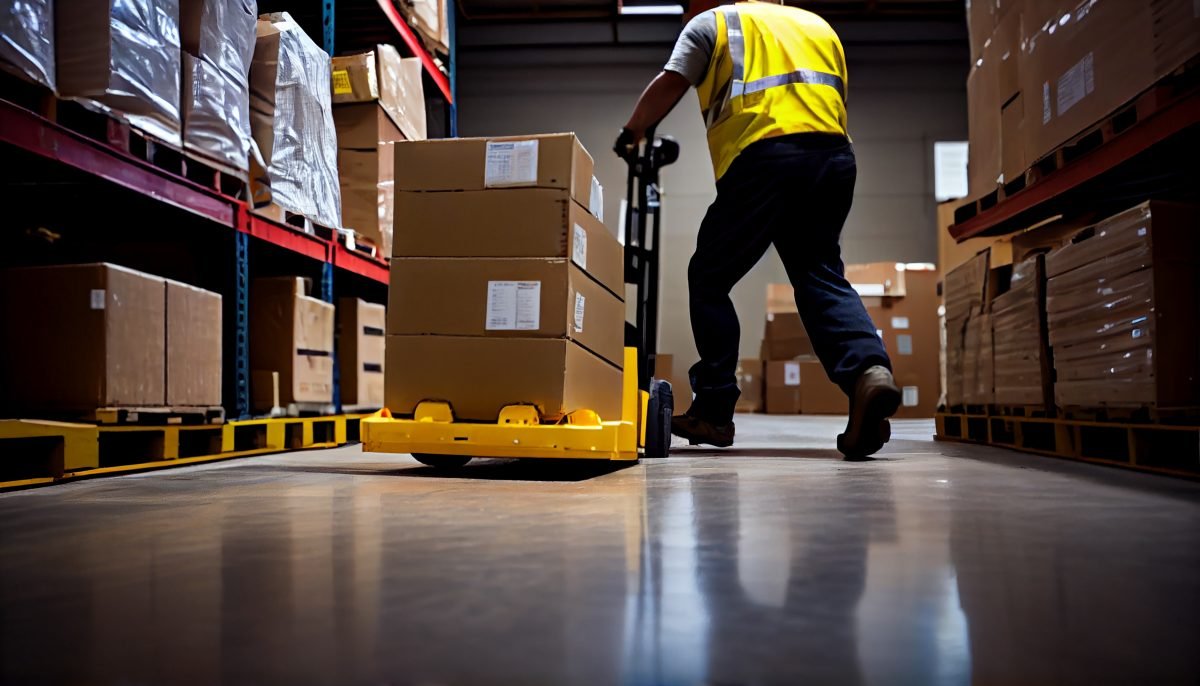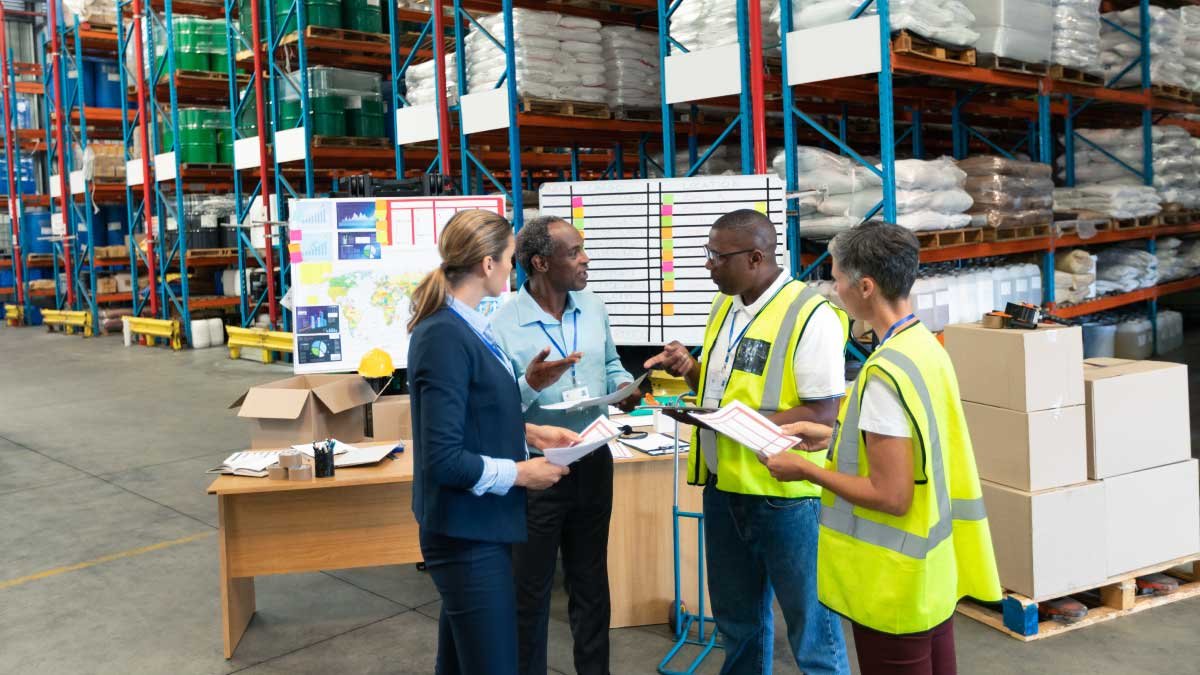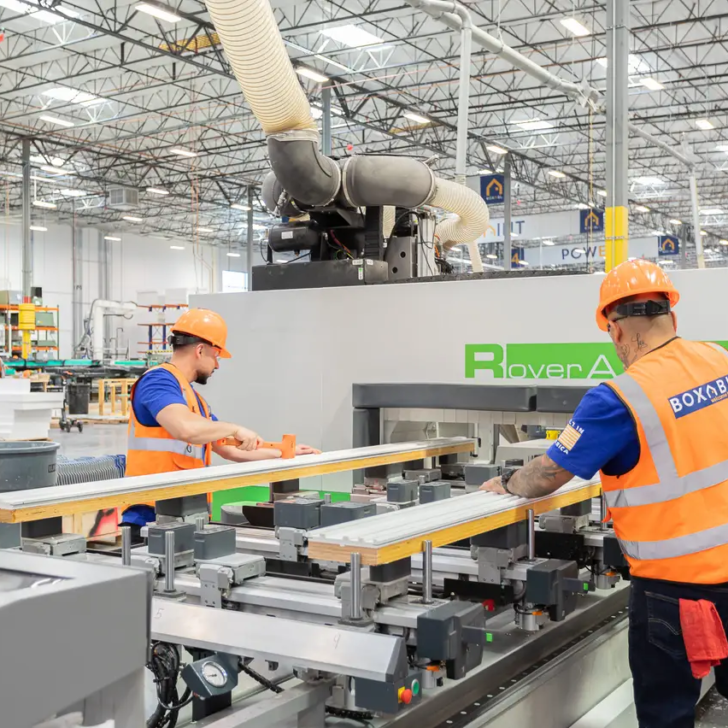Key takeaways
- Flexibility in logistics is now essential for success in the quickly changing corporate environment of today.
- For organizations to remain competitive, they must be able to quickly adjust to shifting client preferences, market conditions, and demands.
- Businesses can improve overall productivity, lower costs, and increase customer happiness by realizing the value of flexible logistics.
- By putting important tactics into practice—like creating flexible supply chains, utilizing technology, encouraging teamwork, and creating backup plans—businesses may successfully negotiate the challenges presented by the intricate modern supply chain.
- A company’s capacity to satisfy the shifting needs of the market can also be improved by adjusting to technical developments in logistics, such as automation, data analytics, real-time tracking, and developing technologies.
- Despite the difficulties that may arise, businesses that proactively address them can successfully implement logistics flexibility and position themselves for future success.

Introduction
It is impossible to overestimate the significance of logistical flexibility in the quickly changing business environment of today. Businesses must be able to quickly respond and adapt to changing customer demands and uncertain market conditions. Flexibility in logistics enables businesses to stay ahead of the curve and guarantee that they have the tools and plans necessary to take on obstacles head-on. Businesses may improve their agility and efficiency in the face of uncertainty by embracing technology, encouraging cooperation, and creating backup plans. Future developments in the fields of automation, IoT, and artificial intelligence will continue to influence logistics flexibility and present fresh chances for development and innovation. Businesses can position themselves for long-term success in a dynamic and competitive environment by continuing to be proactive and adaptive. industry.
Understanding the Importance of Logistics Flexibility
For organizations to successfully handle the shifting needs of a constantly changing world, logistics flexibility is essential. It speaks to the capacity to swiftly and effectively adjust to unforeseen shifts in the market, client needs, and supply chain. Success in today’s hectic and cutthroat corporate world depends on having flexible logistics.
The ability of logistics to adapt to changes in demand is one of the main factors contributing to its importance. Rapid changes in market trends and customer preferences mean that organizations must be able to modify their logistics operations accordingly. Businesses can fulfill client needs by maintaining the appropriate level of inventory, resources, and transportation capacity by exercising flexibility.
The influence of logistical flexibility on customer satisfaction is another crucial factor. The entire customer experience is improved when companies are able to promptly address customer needs and fulfill product delivery commitments. Increased client loyalty and repeat business may result from this.
Flexibility in logistics can also save expenses and increase productivity for companies. Businesses that are flexible enough to adjust to shifts in demand can steer clear of surplus inventory or stockouts, which can incur needless expenses. Additionally, it enables companies to streamline their modes and routes of transportation, which reduces costs and speeds up deliveries.
In summation, firms must recognize the value of flexibility in logistics given the rapidly changing nature of the modern world. It helps companies to adapt to shifting consumer needs, raise customer happiness, cut expenses, and boost efficiency.
Key Strategies for Implementing Logistics Flexibility
Careful preparation and execution are necessary when implementing logistical flexibility. The following are important tactics that companies should think about:
1. Create flexible supply chains: Companies should concentrate on creating flexible and adaptable supply chains. Strong ties with suppliers, the application of demand forecasting strategies, and the use of technology for inventory tracking and management can all help achieve this.
2. Adopt technology: Technology is essential to enable flexibility in logistics. Advanced data analytics tools, warehouse management systems, and transportation management systems are investments that businesses should make. These tools can speed up decision-making, optimize routes and inventory levels, and give real-time supply chain information.
3. Encourage cooperation: Putting logistical flexibility into practice requires cooperation. Companies should work together with vendors, clients, and logistics service providers to exchange data, plan tasks, and pinpoint areas that need improvement. Lead times can be shortened, order fulfillment can be enhanced, and supply chain efficiency can be raised overall using this.
4. Create backup plans: It’s critical to have backup plans ready to handle unforeseen supply chain interruptions. Companies need to recognize possible risks and create plans to reduce them. This may entail flexible labor arrangements, backup transportation options, and alternate suppliers.
Businesses may improve their logistical flexibility and successfully handle the shifting demands of the modern world by putting these important techniques into practice.
Adapting to Technological Advancements in Logistics
The logistics sector has undergone a technological revolution, and companies must now adapt to remain competitive. Here are a few strategies companies can use to keep up with technology developments in logistics:
1. Adopt automation: Companies can increase productivity and streamline their shipping processes by implementing automation. This can involve the use of robotics for order picking and packaging, automated warehousing systems, and driverless cars for transportation.
2. Make use of data analytics: Data analytics may assist companies in making data-driven decisions by offering insightful information about the supply chain. Businesses can enhance their performance in logistics by examining data on client demand, inventory levels, transportation routes, and other aspects.
3. Put real-time tracking into place: Technologies like GPS and RFID that track shipments in real-time can give you insight into their whereabouts and current condition. This enables companies to optimize routes, handle exceptions proactively, and give clients precise delivery estimates.
4. Investigate cutting-edge technologies: Companies should be abreast of cutting-edge developments in the logistics space, including blockchain, AI, and the Internet of Things (IoT). These technologies could lead to new business models and further improvements in logistics flexibility.
Businesses can obtain a competitive edge and better fulfill the shifting demands of the modern world by adjusting to technology improvements in logistics.
Overcoming Challenges in Implementing Logistics Flexibility
While there are many advantages to incorporating flexibility in logistics, there are drawbacks that companies may experience. The following are some typical obstacles and methods to get beyond them:
1. Opposition to change: Introducing logistics flexibility may call for adjustments to current procedures and frameworks, which may encounter opposition. Businesses should emphasize the advantages of flexibility, include staff members in the process of making changes, and offer assistance and training in order to overcome this obstacle.
2. Lack of visibility: Flexibility in logistics might be hampered by a lack of supply chain visibility. Companies should spend money on real-time visibility-enabling technologies like data analytics tools and transportation management systems. This can assist in finding bottlenecks, maximizing inventories, and enhancing the effectiveness of the supply chain as a whole.
3. Operational complexity: Since there are many different parties, procedures, and systems involved, logistics operations can be complicated. Businesses should promote stakeholder participation, standardize operations, and streamline processes in order to overcome this obstacle. Lead times can be shortened, communication can be improved, and overall efficiency can be increased.
4. Financial considerations: Putting logistical flexibility into practice may come with up-front expenses like training and technology purchases. Companies should create a convincing business case for flexibility by carefully weighing the advantages and disadvantages. Securing the required resources and support from stakeholders can be aided by doing this.
Businesses can successfully deploy logistical flexibility and enjoy its benefits by tackling these difficulties head-on.

Future Trends in Logistics Flexibility
New developments in technology and developing trends will influence the flexibility of logistics in the future. The following are some upcoming trends to be aware of:
1. AI and machine learning: These two technologies have the power to revolutionize logistical processes. These technologies provide predictive analytics for demand forecasting, automate decision-making processes, and optimize routes and inventory levels.
2. The Internet of Things (IoT): IoT can give connected devices’ real-time data, improving supply chain visibility and control. IoT sensors have the ability to track shipments, keep an eye on humidity and temperature, and identify possible problems before they become serious.
3. Sustainable logistics: As sustainability becomes more and more important, logistics flexibility will also require implementing eco-friendly procedures. Reducing emissions through transportation route optimization and the use of environmentally friendly packaging materials, and implementing reverse logistics for recycling and waste management.
4. Collaboration and sharing economy: Businesses working together and pooling their resources can improve the flexibility of logistics. This may entail pooling resources like as labor, warehouse space, and even transportation capacity. Marketplaces and collaborative platforms are springing up to make these kinds of agreements easier.
Businesses can stay ahead of the curve and keep unleashing the power of logistics flexibility by adopting these upcoming trends.
Conclusion
In conclusion, in today’s fast-paced and cutthroat business world, logistics flexibility is an essential component of business operations. Businesses may increase productivity, lower costs, and improve customer happiness by being able to adjust to changing demands. Embracing technology, establishing agile supply chains, encouraging teamwork, and creating backup plans are important tactics for embracing logistical flexibility. Furthermore, companies must adjust to developing technology, automation, data analytics, and real-time tracking, among other technical improvements in logistics. While reluctance to change and a lack of visibility may be barriers to implementing logistics flexibility, companies may get past these by emphasizing the advantages, making the necessary technological investments, optimizing operations, and carefully weighing the costs and benefits. Future developments in logistics flexibility will likely result in businesses that embrace AI, IoT, sustainable practices, and collaboration will stay ahead of the curve and thrive in the ever-changing business landscape.

FAQ
What is logistics flexibility?
The ability of companies to adjust and react to shifting conditions and needs within their supply chain operations is referred to as logistics flexibility. It entails putting plans into action and employing technologies that let companies respond swiftly to shifts in consumer demand, unforeseen setbacks, and market conditions. Businesses may streamline processes, cut expenses, boost productivity, and ultimately improve customer happiness by having flexible logistics. In today’s fast-paced and competitive corporate climate, when staying ahead of the curve requires the capacity to pivot and react to new trends and problems, this agility and responsiveness are crucial.
Why is flexibility important in transportation?
In the transportation industry, flexibility is essential because it enables companies to react swiftly and effectively to shifting needs and conditions throughout the supply chain. Businesses can increase productivity, cut expenses, and boost customer satisfaction by optimizing transportation techniques, adjusting inventory levels, and routing. Businesses can also overcome unforeseen setbacks, such traffic jams or bad weather, by utilizing flexibility in transportation to locate alternate routes and guarantee on-time delivery. All things considered, companies must integrate flexibility into their transportation operations if they want to remain competitive and satisfy the changing demands of the contemporary world.
How important is logistics in the world?
Today’s world depends heavily on logistics since it forms the foundation of supply chain operations for companies in a wide range of sectors. In the contemporary global market, where commodities and amenities are incessantly transferred across locations, proficient logistics administration is indispensable to guaranteeing smooth operations, punctual product delivery, and comprehensive firm prosperity. Every facet of the business and society is impacted by logistics, from production and distribution to retail and online sales. Businesses would find it difficult to manage inventories, satisfy consumer expectations, and compete in the market without effective logistics. Thus, it is impossible to overestimate the significance of logistics in the world since it is essential for promoting commerce, accelerating economic growth, and eventually raising people’s standard of living everywhere.
How do you achieve flexibility in supply chain?
It is imperative for firms to have supply chain flexibility in order to adjust to evolving demands and situations. Developing agile supply chains that can swiftly adapt to changes in consumer demand and unforeseen disruptions is one such tactic. This may entail the employment of robotics for order picking and packaging, automated warehousing systems, and driverless cars for transportation. Utilizing data analytics may also offer insightful information about the supply chain, assisting companies in making data-driven decisions that maximize logistical operations. Businesses can proactively manage exceptions and improve routes by implementing real-time monitoring technologies, like as GPS and RFID, which can also give visibility into the position and status of shipments. Businesses can further increase the flexibility of their logistics by investigating cutting-edge technologies like blockchain, artificial intelligence, and the Internet of Things (IoT). and enable new business models. Overall, achieving flexibility in the supply chain is crucial for businesses to gain a competitive edge and better meet the changing demands of the modern world.
Hope this article was helpful for check out our previous blog post by clicking here


